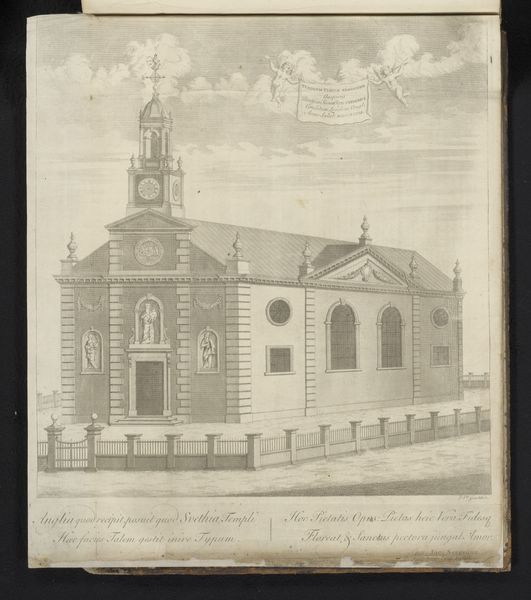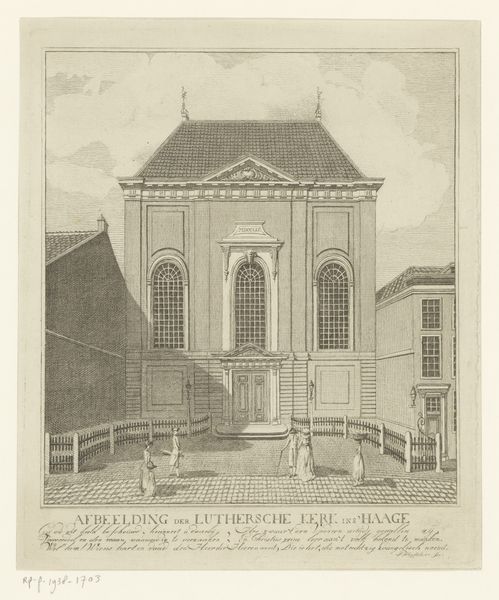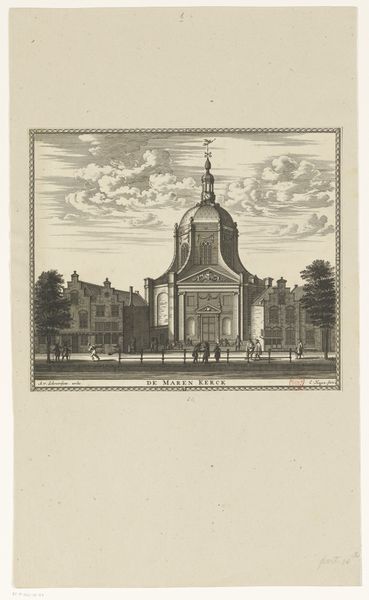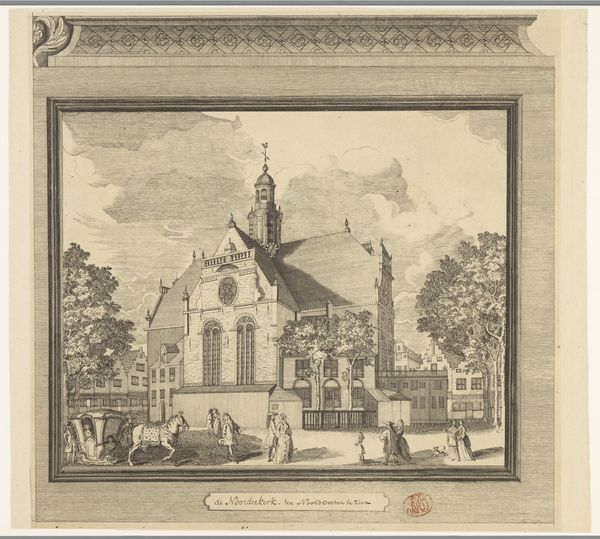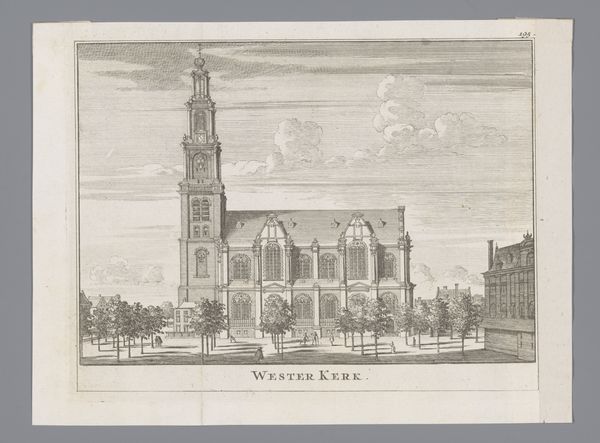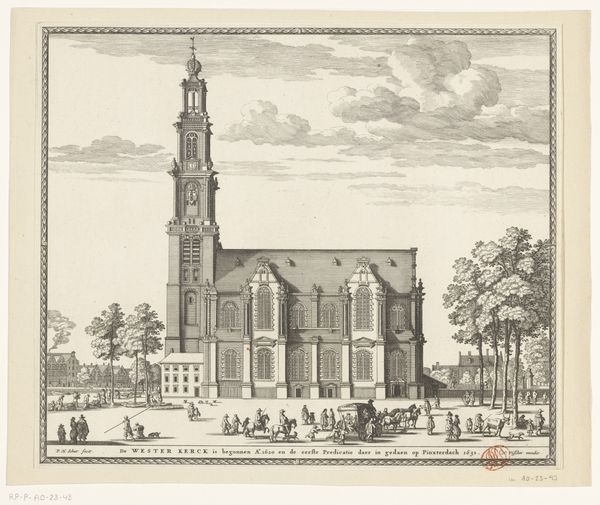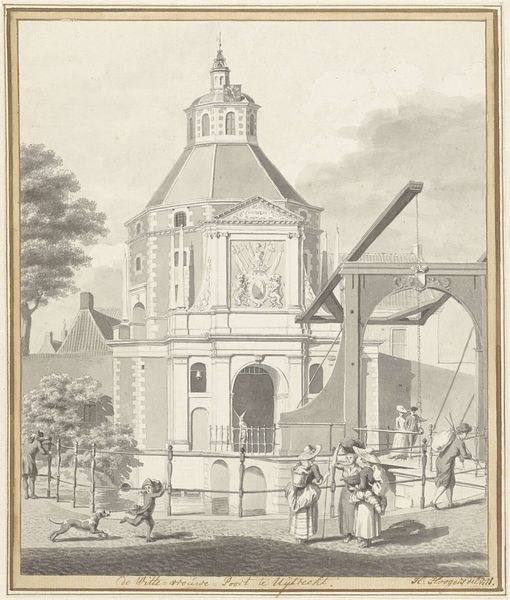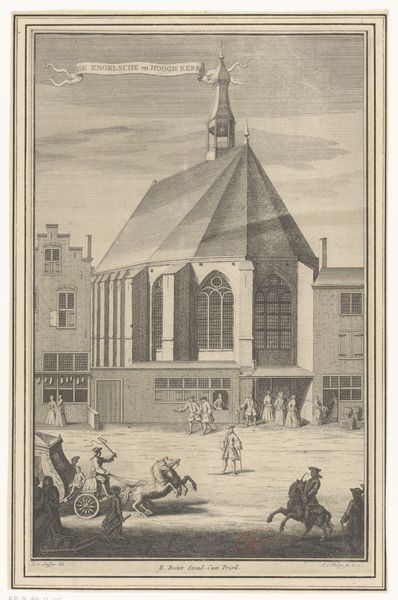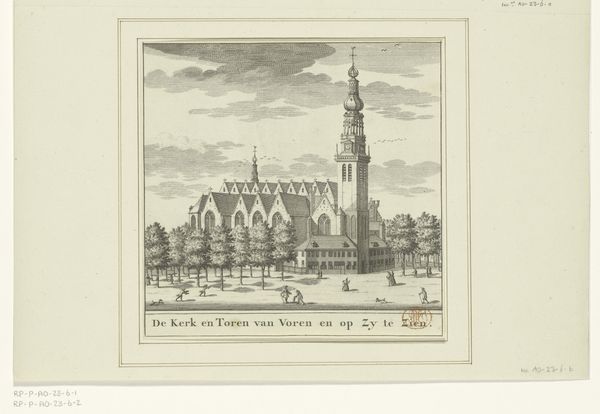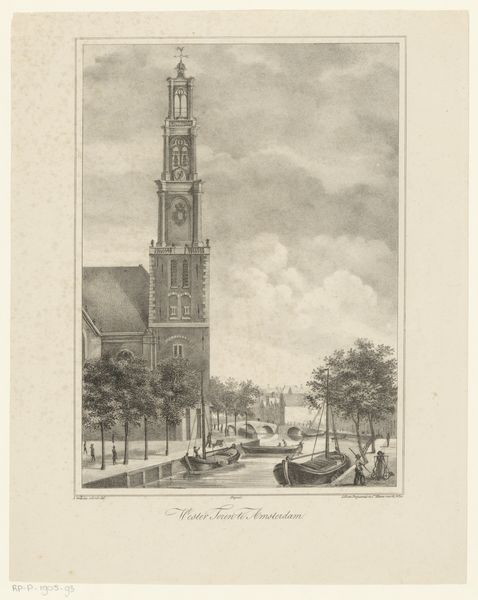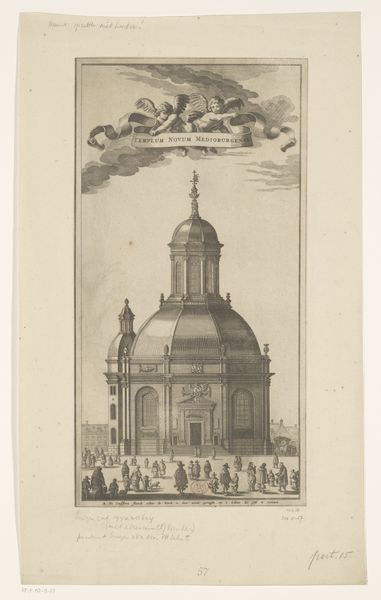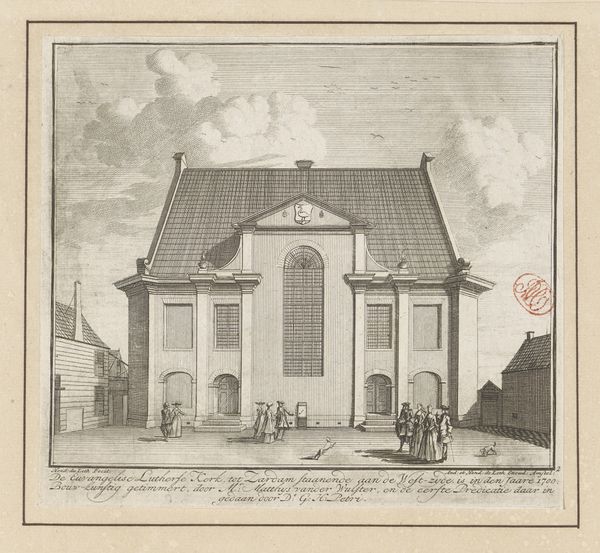
Dimensions: height 277 mm, width 230 mm
Copyright: Rijks Museum: Open Domain
Curator: Editor: Here we have "Gezicht op de Marekerk te Leiden," a 1762 engraving by Abraham Delfos. The scene is quite serene, capturing a grand architectural structure along a waterway. What do you see in this piece? Curator: Beyond the architectural rendering, consider the printmaking process itself. Engraving demands meticulous labor, doesn't it? The burin’s repetitive action, cutting lines into the copperplate. Note the precise delineation used to produce this cityscape. It transforms architecture and the surrounding activity into commodities. Editor: Absolutely! I’m struck by the stark contrast between the grand architecture and the daily life bustling along the canal. How does this reflect Dutch Golden Age sensibilities? Curator: The Dutch Golden Age was built upon trade. Consider how readily these prints would have circulated – serving as both artworks and records, feeding into and shaped by an economy increasingly dependent on reproducibility and exchange. This print is also about civic pride; the Marekerk becomes a symbol of Leiden. Does the print’s function challenge our conventional understanding of artistic value, wouldn't you say? Editor: That's a really interesting way of thinking about it – blurring the lines between art and product. Curator: It certainly asks us to re-evaluate those boundaries, especially within the context of materials and labor! Editor: I hadn’t considered the economic implications of printmaking so deeply before; I was so focused on the aesthetics. This definitely changed how I will perceive engravings from now on. Curator: I’m glad! Seeing the work as not just an image but also as a product shaped by—and shaping—its historical economy really opens things up, don't you think?
Comments
No comments
Be the first to comment and join the conversation on the ultimate creative platform.
